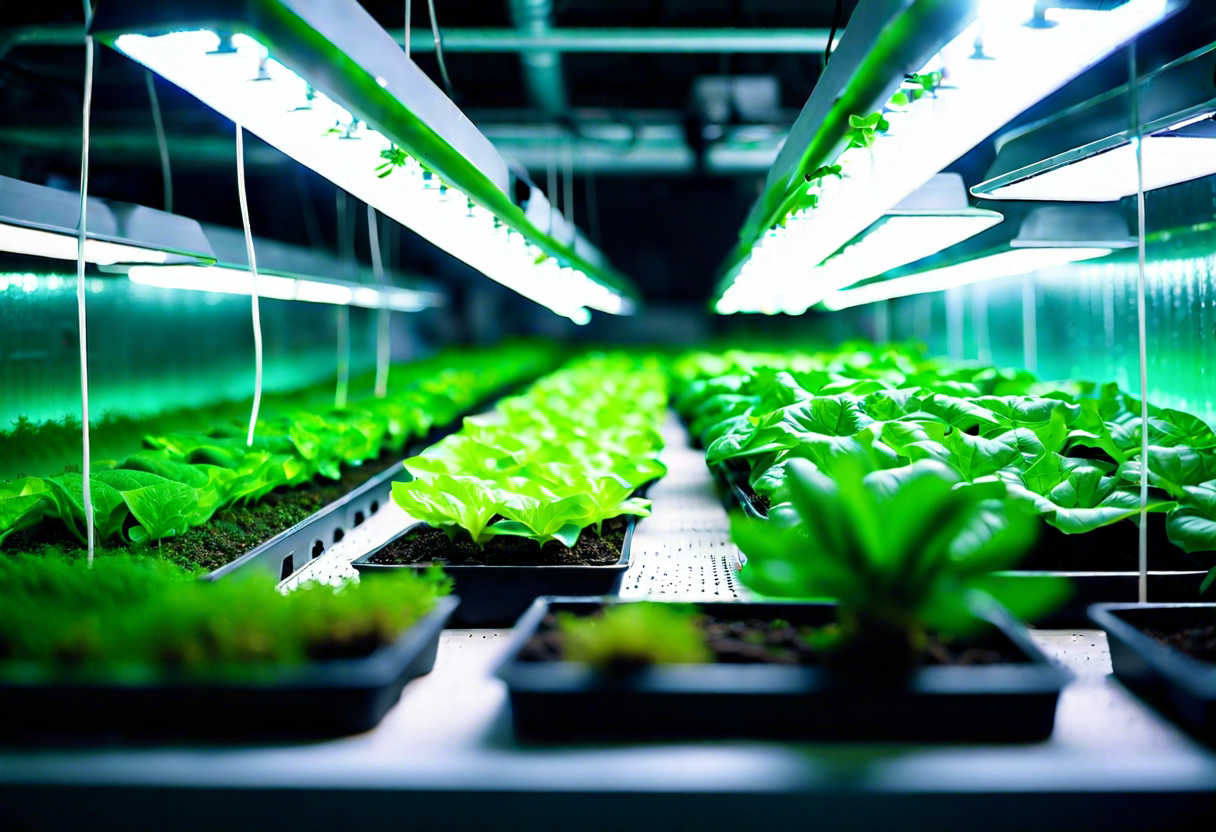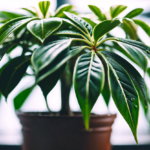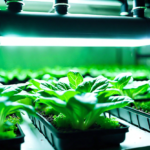Benefits of Hydroponic Indoor Gardens
Hydroponic indoor gardens are gaining popularity among gardening enthusiasts, and for good reason. This innovative gardening method offers numerous benefits that traditional soil-based gardening cannot match. By providing plants with all the essential nutrients they need and eliminating the need for soil, hydroponic systems allow for efficient and productive indoor gardening. Here are some of the key benefits of hydroponic indoor gardens:
1. Water Efficiency
One of the significant advantages of hydroponic indoor gardens is their water efficiency. Unlike traditional soil-based gardens, where much of the water is lost to evaporation or runoff, hydroponic systems recirculate water, reducing water usage by up to 90%. By supplying nutrients directly to the plant roots, hydroponics allows plants to take up water more efficiently, leading to healthier and more robust growth.
2. Space Optimization
For urban dwellers or those with limited outdoor space, hydroponic indoor gardens are an ideal solution. With vertical farming techniques, hydroponic systems maximize space by growing plants in stacked layers. This vertical setup allows you to grow more plants in a smaller area, making it perfect for apartments, balconies, or even unused corners of your home. Hydroponic indoor gardens bring the joy and benefits of gardening to anyone, regardless of space limitations.
3. Year-Round Growing
Gone are the days when you had to wait for the appropriate season to grow your favorite fruits, vegetables, or herbs. Hydroponic indoor gardens provide optimal growing conditions, such as controlled temperature, lighting, and humidity, allowing you to grow plants year-round. By eliminating the dependence on external climatic factors, hydroponic gardening ensures a constant and uninterrupted supply of fresh produce whenever you desire.
4. Increased Crop Yield
Hydroponic systems provide plants with a perfect balance of nutrients, which results in faster growth and higher crop yields compared to traditional gardening methods. The precise control over nutrient delivery allows plants to allocate more energy towards growth and fruit production rather than searching for nutrients in the soil. As a result, hydroponic gardens often yield up to two to three times more produce than traditional soil-based gardens.
5. Pest and Disease Control
Without soil, hydroponic indoor gardens are less susceptible to pests, diseases, and weed infestations. Soil-borne pests and pathogens cannot find their way into the garden, reducing the need for chemical pesticides or herbicides. Additionally, with hydroponics, you can easily monitor and control the nutrient solution, thus creating an inhospitable environment for pests. This makes hydroponic gardening not only more sustainable but also more environmentally friendly.
Hydroponic indoor gardens offer a range of benefits that make them an attractive option for gardening enthusiasts. From water efficiency and space optimization to year-round growing and increased crop yield, hydroponics provides an efficient and sustainable way to grow fresh produce. Whether you have limited space or want to enjoy gardening all year long, consider starting your own hydroponic indoor garden and experience the rewards of this innovative gardening technique.
Hydroponic Indoor Gardens: Essential Components for Success
Creating a Hydroponic Indoor Garden: The Key Components
Hydroponic indoor gardening is gaining popularity among plant enthusiasts who want to grow their own fresh produce without the need for traditional soil-based methods. This innovative gardening technique allows plants to thrive in a nutrient-rich water solution, providing them with exactly what they need to flourish. Whether you are a seasoned gardener or new to the concept, understanding the essential components of a hydroponic indoor garden is crucial for success.
One of the fundamental components of a hydroponic indoor garden is a suitable growing system. There are several types to choose from, including the water culture system, nutrient film technique (NFT), drip system, and ebb and flow system. Each system has its own unique features and benefits, so it’s important to research and select the one that best suits your needs and available space.
Another crucial component of a hydroponic indoor garden is the growing medium. Unlike traditional soil-based gardening, hydroponics relies on inert materials to support the plants’ roots and stabilize the nutrient solution. Common growing mediums used in hydroponics include coconut coir, perlite, vermiculite, and rockwool. These mediums provide excellent drainage and aeration, ensuring optimal root development and nutrient absorption.
In addition to the growing system and medium, a hydroponic indoor garden requires a nutrient solution to provide essential elements for plant growth. This solution typically contains a precise balance of nutrients, including macronutrients (such as nitrogen, phosphorus, and potassium) and micronutrients (such as iron, zinc, and manganese). By continuously circulating the nutrient solution through the hydroponic system, plants have access to readily available nutrients, resulting in faster growth and higher yields.
To ensure proper nutrient delivery, hydroponic indoor gardens rely on a recirculating system that pumps and circulates the nutrient solution throughout the growing system. This allows the solution to be absorbed by the plant roots and then recirculated back to the nutrient reservoir for reuse. The recirculating system plays a crucial role in maintaining a consistent nutrient balance and preventing nutrient deficiencies.
Hydroponic indoor gardens require adequate lighting to support photosynthesis and promote healthy plant growth. LED grow lights have become increasingly popular in recent years due to their energy efficiency and customizable light spectrums. By providing the right intensity and spectrum of light, LED grow lights can maximize plant growth and ensure optimal yields.
A successful hydroponic indoor garden relies on several essential components, including a suitable growing system, inert growing medium, nutrient solution, recirculating system, and proper lighting. By incorporating these elements into your hydroponic setup, you can enjoy the benefits of year-round gardening and freshly grown produce right at your fingertips. So, get ready to embark on your hydroponic journey and watch your indoor garden thrive like never before.
Best Plants to Grow in a Hydroponic Indoor Garden
When it comes to setting up a hydroponic indoor garden, choosing the right plants is crucial for success. Unlike traditional soil gardening, hydroponics relies on nutrient-rich water to cultivate plants. This method allows for optimal growth, faster harvests, and higher yields. Whether you’re a beginner or an experienced gardener, here are some of the best plants to grow in a hydroponic indoor garden.
-
Leafy Greens – Lettuce, spinach, kale, and other leafy greens thrive in hydroponic systems. These fast-growing plants benefit from the increased oxygen and nutrient availability in the water. With hydroponics, you can grow a steady supply of fresh, nutritious greens all year round.
-
Herbs – Basil, mint, parsley, cilantro, and other herbs are well-suited for hydroponic gardening. They grow quickly and can be harvested frequently, making them a popular choice for indoor gardens. Hydroponic systems provide consistent moisture levels and optimal root health, resulting in robust and flavorful herbs.
-
Tomatoes – Tomatoes are another excellent choice for hydroponic cultivation. They require a good amount of light and warmth, which can be easily controlled in an indoor environment. With hydroponics, you can grow delicious, juicy tomatoes that are free from soil-borne diseases and pests.
-
Strawberries – Hydroponic systems are ideal for growing strawberries, especially if you’re limited on space. These sweet and tangy berries thrive in a soilless environment, producing high yields. By providing the right balance of nutrients and water, you can enjoy fresh strawberries year-round, even in colder climates.
-
Peppers – Whether it’s bell peppers, chili peppers, or hot peppers, these vibrant and flavorful vegetables flourish in hydroponics. With precise control over temperature, light, and nutrient levels, you can create the optimal growing conditions for peppers. Hydroponics also allows for better pollination, resulting in larger and tastier fruits.
-
Cucumbers – Cucumbers are known for their vigorous growth, making them an excellent choice for hydroponic gardening. With vertical systems, you can maximize space and grow cucumbers vertically, saving valuable floor space. Hydroponic cucumbers are often sweeter and more tender compared to their soil-grown counterparts.
-
Microgreens – Microgreens, such as broccoli, radish, and sunflower sprouts, are gaining popularity in hydroponic indoor gardens. These young edible plants are packed with nutrients and add a burst of flavor and texture to salads, sandwiches, and other dishes. Quick to grow and harvest, microgreens can be an excellent addition to your hydroponic garden.
Remember, successful hydroponic gardening requires proper knowledge in managing nutrient solutions, water pH levels, and lighting. Each plant has its own specific requirements, so research and choose varieties that are well-suited for hydroponics. By selecting the best plants for your hydroponic indoor garden, you can enjoy the benefits of fresh, homegrown produce all year round.
Common Challenges and Solutions in Hydroponic Indoor Gardening
Hydroponic indoor gardening is an innovative method of growing plants without soil, relying instead on water-based nutrient solutions. This technique offers numerous advantages, such as enhanced plant growth, year-round cultivation, and reduced water usage. However, like any gardening method, hydroponic indoor gardening also presents its fair share of challenges. In this article, we will explore some common challenges faced by hydroponic gardeners and provide effective solutions to overcome them.
One of the primary challenges in hydroponic indoor gardening is maintaining the ideal nutrient balance in the water solution. Plants in hydroponic systems require specific combinations of nutrients to thrive. Deviations from the optimal nutrient balance can lead to nutrient deficiencies or toxicities, affecting plant growth and overall health. Regular monitoring of water pH and conducting regular nutrient tests can help gardeners stay ahead of these issues. Adjusting the pH and nutrient levels by adding appropriate solutions will ensure that plants receive the necessary nutrients for healthy growth.
Another challenge that hydroponic indoor gardeners may face is the occurrence of pests and diseases. While hydroponic systems are generally less susceptible to pests and diseases compared to traditional soil-based gardens, they are not entirely immune. Inadequate hygiene practices, contaminated water sources, or introducing infected plants can lead to pest and disease infestations. Implementing preventive measures such as regular cleaning and disinfection of equipment, using clean water sources, and inspecting plants regularly can help minimize the risk of pests and diseases. Additionally, beneficial insects or biological control methods can be employed to address infestations if they occur.
Maintaining the right environmental conditions is crucial for successful hydroponic indoor gardening. Factors such as temperature, humidity, and light intensity play a vital role in plant growth. Inadequate environmental control can lead to slower growth rates, lower yields, or even plant losses. Utilizing environmental control systems like fans, heaters, humidifiers, and grow lights can help regulate temperature, humidity, and lighting conditions. Monitoring these factors closely and making necessary adjustments will promote optimal plant growth and productivity.
One more challenge that hydroponic indoor gardeners may encounter is managing root diseases. As the roots are constantly immersed in water, they are more vulnerable to root rot and other fungal and bacterial infections. To prevent root diseases, it is essential to establish a clean and sterile environment. This can be achieved by using sterile growing mediums like rockwool or coconut coir, maintaining proper water circulation, and employing appropriate sterilization techniques for equipment and systems. Regularly inspecting the roots for any signs of diseases and taking prompt action at the first indication will also contribute to healthy root development.
While hydroponic indoor gardening offers numerous benefits, it is not without its challenges. Maintaining the right nutrient balance, preventing pests and diseases, controlling environmental conditions, and managing root diseases are all vital aspects that need careful attention. By implementing effective solutions such as regular monitoring, preventive measures, environmental control systems, and maintaining a sterile environment, hydroponic gardeners can overcome these challenges and enjoy a successful and thriving indoor garden.
Tips for Setting up and Maintaining a Hydroponic Indoor Garden
Setting up and maintaining a hydroponic indoor garden can be a rewarding and enjoyable experience. However, it requires careful planning, attention to detail, and consistent maintenance. Whether you are a beginner or an experienced gardener, here are some valuable tips to help you get started and ensure the success of your hydroponic indoor garden.
Choose the Right Location
When setting up your hydroponic indoor garden, selecting the right location is crucial. Look for a space that receives ample sunlight or can accommodate artificial grow lights. Ensure that the area is well-ventilated and has a stable temperature. Avoid locations prone to temperature fluctuations or draughts, as they can affect plant growth and potentially lead to pests or diseases.
Select Suitable Plants
Not all plants are well-suited for hydroponic cultivation. When choosing plants for your indoor garden, opt for varieties that thrive in soil-less environments. Leafy greens such as lettuce, spinach, and kale, as well as herbs like basil and mint, are ideal choices for hydroponic systems. Additionally, consider the size and growth requirements of the plants to ensure they can thrive within the available space.
Invest in Quality Equipment
The success of your hydroponic indoor garden heavily relies on the equipment you use. Invest in high-quality components such as pumps, reservoirs, grow lights, and pH meters. Purchase nutrient solutions specifically formulated for hydroponic cultivation to provide essential vitamins and minerals to your plants. Reliable equipment will promote healthier growth and minimize the risk of system failures.
Maintain Proper Nutrient Levels
Hydroponic plants rely on nutrient solutions for their growth and development. Regularly monitor and maintain proper nutrient levels in your system by following the guidelines provided by the manufacturer. Overdosing or underdosing nutrients can negatively impact plant health and productivity. Keep track of the pH level of the nutrient solution as well, as it directly affects nutrient availability.
Implement a Regular Maintenance Schedule
Maintaining a consistent maintenance schedule is vital for the long-term success of your hydroponic indoor garden. Regularly inspect your system for leaks, clogs, or any signs of damage. Clean and disinfect the growing containers, trays, and other equipment to prevent the buildup of algae or pathogens. Trim and prune your plants as needed to promote healthier growth and prevent overcrowding.
Monitor Environmental Conditions
Constantly monitor the environmental conditions of your hydroponic indoor garden. Keep track of temperature, humidity, and air circulation to ensure optimal growth conditions for your plants. Use a thermometer and hygrometer to regularly assess these factors and make necessary adjustments if needed. Proper environmental control will contribute to better plant health and higher yields.
Learn from Resources and Other Gardeners
Hydroponic gardening is a constantly evolving field, with new techniques and discoveries emerging regularly. Take advantage of resources such as books, online forums, and reputable gardening websites to expand your knowledge and stay up to date on the latest advancements. Connect with other hydroponic gardeners through social media or local gardening clubs to exchange ideas and learn from their experiences.
By following these tips, you can set up and maintain a thriving hydroponic indoor garden. Enjoy the benefits of growing fresh, healthy produce year-round and the satisfaction of nurturing plants in a controlled, soil-less environment.
Conclusion
It is clear that hydroponic indoor gardening offers a range of benefits and advantages for plant enthusiasts. These innovative systems allow plants to thrive in a controlled environment, regardless of the climate or season, resulting in faster growth rates, higher yields, and healthier plants. Moreover, the use of water-based nutrient solutions instead of soil eliminates the risk of pests and diseases, reducing the need for harmful chemicals.
When setting up a hydroponic indoor garden, there are several essential components that play a vital role in creating the optimal growing conditions. These include a suitable growing system, such as the popular nutrient film technique (NFT) or deep water culture (DWC), as well as appropriate lighting, ventilation, and temperature control. Additionally, pH and nutrient levels must be carefully monitored and adjusted to ensure plants receive the necessary nutrition for robust growth.
Selecting the right plants for a hydroponic indoor garden is crucial for achieving successful and abundant harvests. Leafy greens, herbs, and small fruiting plants like tomatoes and strawberries are among the best choices due to their compatibility with the controlled garden environment. These plants generally have shallow root systems and thrive in nutrient-rich water solutions, making them well-suited for hydroponic cultivation.
While hydroponic indoor gardening can promise exceptional results, it does come with its fair share of challenges. Common issues include pH fluctuations, nutrient imbalances, algae growth, and root diseases. However, with proper attention and understanding, these challenges can be overcome. Regular pH testing, nutrient monitoring, and maintaining optimum growing conditions will help prevent these issues and ensure the long-term success of the hydroponic garden.
To set up and maintain a hydroponic indoor garden effectively, there are a few tips to consider. Firstly, it is crucial to start with high-quality seeds or young transplants to ensure healthy growth. Secondly, providing ample light, whether from natural sunlight or artificial grow lights, is essential for photosynthesis. Ventilation is another crucial aspect, as it helps circulate air, prevents mold and diseases, and aids in pollination for fruiting plants. Additionally, maintaining cleanliness, practicing proper sterilization of equipment, and monitoring nutrient levels regularly will promote optimal plant growth.
Hydroponic indoor gardening is an innovative and efficient method of cultivating plants in a controlled environment. With its numerous benefits, essential components, suitable plant selection, effective troubleshooting techniques, and proper setup and maintenance tips, hydroponic indoor gardens offer an exciting and rewarding approach to gardening. Whether you are a seasoned gardener or a beginner, these systems provide an opportunity to enjoy a flourishing garden all year round, regardless of space limitations or unfavorable outdoor conditions. So, dive into the world of hydroponics and experience the joy of nurturing thriving plants in your very own hydroponic indoor garden.


